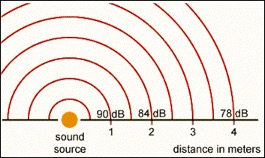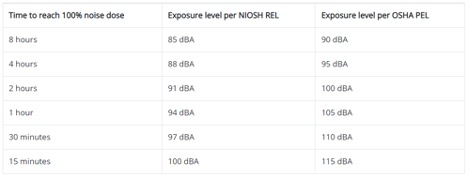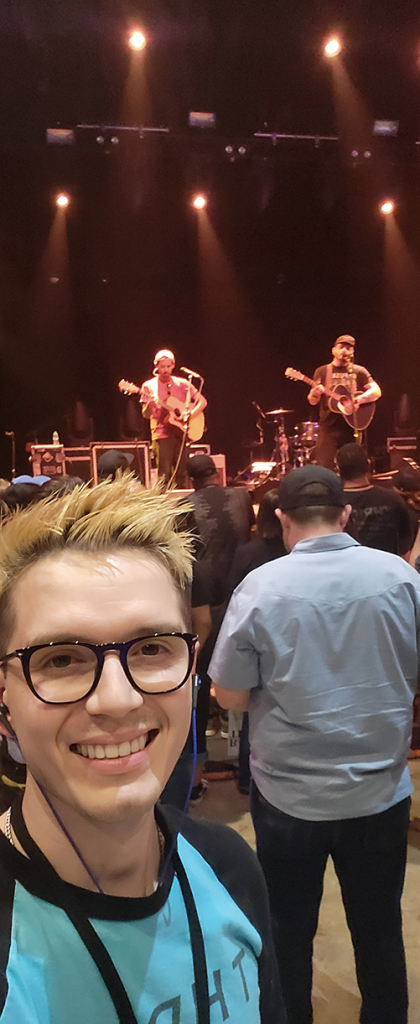 By: Matthew Randal, BS, Graduate Student Representative
By: Matthew Randal, BS, Graduate Student Representative
Your friendly neighborhood Texas Speech-Language-Hearing Association (TSHA) Graduate Student Representative is reporting from Austin, Texas, proudly known as the live music capital of the world. Such fun events like the Austin City Limits Festival or South by Southwest, however, can have undesirable consequences for one’s hearing. Attendees are sometimes left with ringing in their ears (tinnitus) and ultimately hearing loss. So how does someone enjoy some of Austin’s best entertainment while still protecting their ears for years to come? Let me share with you some easily executable tips to keep you safe while you rock out.
First, hearing protection is of primary importance. You need to find some way to cover or plug your ears. Foam plugs are cheap and are often given out for free at these events. However, they must be inserted properly to be effective. Pinch, twist, and push. The foam plug will expand to the contours of your ear canal, so your job is to compress it tightly before insertion. There are plenty of noise-attenuating plugs that resemble more fashionable earbuds too. My favorites of the earbud-type come from V-Moda and Eargasm. However, if you’d rather not fiddle with smaller plugs, tried and true over-the-ear devices like what you’d find in the hardware section of your local home improvement store also work exceptionally well. A common acronym you’ll see on all these devices is the noise reduction rating (NRR), which is to give you an idea of how much protection you’re getting from the proper application of these plugs, buds, and headphones. Just keep in mind for all of these devices: If you’re not wearing them correctly, you might as well not be wearing them at all.
Second, distance is your friend. Let me introduce you to the inverse square law and how it applies to hearing conservation. Simply put, every time you double your distance from a sound source, the intensity or energy of that sound source loses strength by 6 dB. Therefore, someone standing front and center might be blasting their ears at higher than 100 dB (not good!). However, just taking a few steps back decreases exposure intensity by a measurable amount. Putting distance between you and the speakers is a good thing. For the sake of this example, stepping back to 8 meters (three doublings of distance) reduces sound intensity from 100 dB to 88 dB. Getting even further from the action will reduce intensity even more. A few variables come into play here like indoor versus outdoor and venue shape and size, but the point remains that your ears will thank you for some extra breathing room.

Source: osha.gov
Lastly, keep in mind exposure time. Low-intensity sounds have no limit to the time you can listen. As sound intensity (volume) increases, however, the amount of time one can listen before damage occurs shortens. Remember when we said our hypothetical concert reached 100 dB? In only 15 minutes, that volume is known to cause hearing loss. That hearing loss results from permanent damage to cochlear hair cells. The damage is permanent, but it is completely avoidable. Now, if the exposure level is just 3 dB less intense, we have on average 30 minutes before permanent damage is done. So do keep in mind that the louder something is, the less time it takes for it to hurt your ears. You’ll find a handy infographic below.

Source: cdc.gov
 As you can now plainly see, there are numerous ways we can avoid damage from noise exposure while still having a splendid time at live music shows. You could have seen me putting these pointers to work at Thrice’s VIP acoustic set at Emo’s back in June. My ears were plugged. I was several meters from the stage. And the show was just 90 minutes long. Damage avoided! Concert enjoyed.
As you can now plainly see, there are numerous ways we can avoid damage from noise exposure while still having a splendid time at live music shows. You could have seen me putting these pointers to work at Thrice’s VIP acoustic set at Emo’s back in June. My ears were plugged. I was several meters from the stage. And the show was just 90 minutes long. Damage avoided! Concert enjoyed.